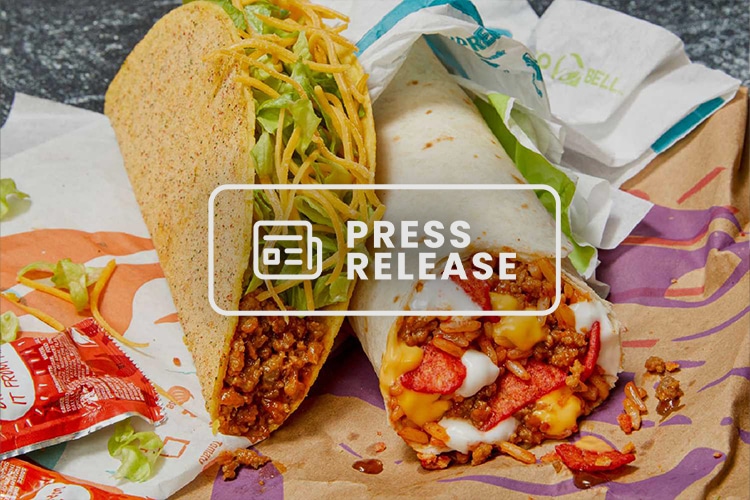Franchise operators are the key to the restaurant industry’s broader recovery. As the industry tracks toward what the National Restaurant Association predicts will be a record $898 billion in total revenue for 2022, both franchisors and franchisees have played an instrumental role in recouping lost locations, revenue, and jobs.
Franchise operators aren’t only instrumental in refilling the proverbial reservoir; this vital part of the industry is also leading the way in innovation after making strategic and operational changes that will define how restaurants provide excellent service and sustainably profit and grow in the short and long-term.
First, let’s look at recovery. The International Franchising Association’s (IFA) 2022 Franchising Economic Outlook confirmed significant losses across various metrics in both the quick service (QSR) and table/full service (FS) segments in 2020. That year, the number of QSR and FS locations fell by 6.7% and 6.5%, respectively. Employment slumped 8.7% and 17.4%, while revenues dropped 10.1% and an unprecedented 27.1%.
Recovery, however, came charging back as growth-focused operators and entrepreneurs met pent-up consumers eager to both emerge from lockdowns and support the hard-hit industry. At QSR, revenue bounced from $241 billion in 2020 to $261.2 billion the following year. At full-service restaurants, employment rose from 923,097 in 2020 to 1,060,736 in 2021, according to the IFA. Improvements are expected to continue apace in 2022, with the output of full-service restaurants predicted to rise 5% to $76.4 billion.
Behind the numbers is a bevy of strategic and tactical adjustments both QSR and FS restaurants have made to stabilize their operations and set them up for success in a new and often uncertain reality. Among those spearheaded by the franchise industry are shifting menu prices, new sales and revenue channels, advanced technology to boost efficiency and improve guests’ experiences, and compensation and benefits increases to meet a new labor market’s demands.
Franchise operators looking to maintain and expand their operational and financial gains can look to three key strategies and tactics to grow regardless of the broader economic situation. They include investing in centralized, scalable solutions such as a Restaurant Enterprise Management (REM) system, controlling food, cost, and labor across all levels of the business, and creating the right reports for managers at all levels. By implementing and adhering to these three measures, owners, operators, and managers will have the data to understand what’s happening at both the individual store and corporate levels and the ability to drill down and spot where challenges are arising, or leaders worthy of emulating are emerging.
Invest in Centralized, Scalable Solutions
The primary and most challenging part of running a franchisee restaurant group is managing the complexity of many individual locations and all the variables involved in the day-to-day operations of each. This can be most easily understood by looking at several key business functions involved in restaurant management, such as inventory and scheduling, and calculating key metrics like food costs and Cost of Goods Sold. Suppose each location has its own methods of taking inventory, assessing staffing needs and setting schedules, and producing reports on their timelines with differing metrics. In that case, it becomes nearly impossible for corporate leadership teams and above-store managers to get an accurate picture of how each location is performing and how the company is faring overall.
With centralized, scalable solutions, both above-store and store-level managers work from the same playbook ensuring the entire company, at all levels, is speaking the same language and using the same processes. With a centralized solution that integrates easily with service providers, suppliers, and point-of-sale (POS) systems, operators can easily understand their business, have the data needed to make critical decisions, and plan expansion without unnecessary complexity or confusion.
Control Food, Costs, and Labor
Managing costs is the most critical part of effective restaurant management. Alongside BOH and FOH execution, management of Prime Cost, the combined cost of food and labor, will determine whether a franchise restaurant can fulfill its promise to its guests, employees, and investors. For franchise groups operating multiple locations, the need to monitor and manage Prime Cost is even more critical, as runaways in food or labor can compress the business’ already thin margins. An unresolved issue at one store could spread throughout the entire company, even dragging down high performers.
Luckily, today’s technology solutions empower above-store operators and store-level managers with tools and visibility to proactively manage these often-dynamic costs and to boost efficiency, margins, and profits in ways once hidden under the vastness of the data generated by a multi-unit restaurant group.
Create The Right Reports for Every Level
On average, restaurants in 2021 spent a mere 1.97% of their gross annual revenue on technology, according to Hospitality Technology’s 24th annual technology study. By comparison, the average small company spends 6.9% of its annual revenue on technology, according to TechTarget. While the restaurant industry is full of intangibles like artistry, hard work, emotional intelligence, patience, and passion, it is also an industry replete with data. Every single product that enters a restaurant, every sale and every task can be assigned a dollar value that can and should be recorded, analyzed, and reported. By doing so, restaurants can clearly define and contextualize the true meaning of improvement. With data, restaurants can improve service and guests’ experiences; they can grow their audience of potential customers, better understand their cost of doing business and profits, and where a disconnect between the two squeezes the industry’s already razor-thin margins.
The information franchise operators and store-level managers need to bolster guest experiences, margins, and profits aren’t complicated, although they have long been too difficult to access. By leveraging an all-in-one, integrated system operators can centralize all of their data with a single platform, use automation to analyze it and form easy-to-access and understand reports, and then quickly share those reports with key team members who can make data-driven decisions that help the company perform better as a whole. Key reports include real-time P&L comparison reports, operations statements, and item price change analyses. With these in hand, franchise operators can identify which locations are top performers and help their less-than-stellar peers become standouts in their own right.
Conclusion
Today, franchise operators and managers have more than enough to deal with. Managing through the ongoing labor crunch, wildly fluctuating ingredient prices, unpredictably shifting consumer behaviors and preferences, and whatever else might come leaves barely any free time, and there’s even less to spend on manually managing complex back-office tasks. While the accounting function is a must that keeps franchise operators moving, there’s a better option than generic solutions with cumbersome manual processes that often produce incorrect results long after the end of the period.
By leveraging an intelligent, integrated solution franchise operators and their teams at all levels can eliminate countless hours of legwork thanks to automation while generating the insights necessary to empower store-level managers to put their teams, and the overall company, on a path toward delivering guests better experiences alongside rising profits and margins that pave the way toward growth.



